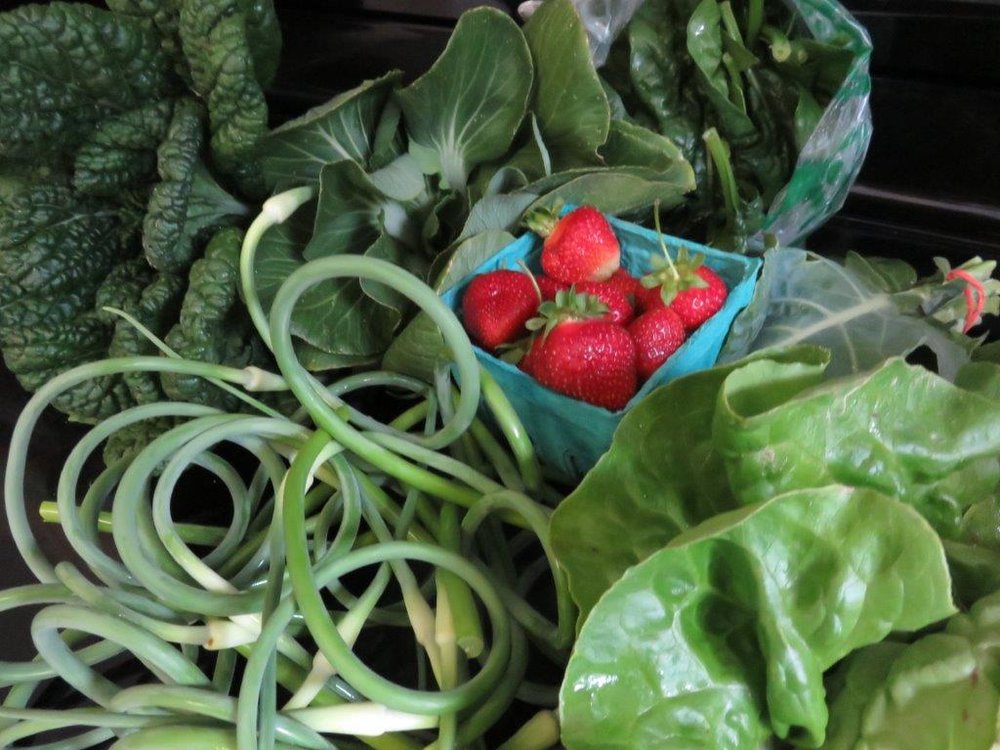CSA Week 1
/Hurray for the first week of the Gorman Farm CSA (Community Supported Agriculture) yesterday! We had ‘special’ distributions of strawberries and lettuce the past few weeks but this was the first week of the normal variety of veggies. I have a medium share this year just as I did in 2014 and am looking forward to the fresh veggies every week.
This time of year - there are lots of shades of green except for the strawberries! I put them in the middle in the picture below. Going clockwise from just above the strawberries, there is 1/2 pound of spinach stuffed into a plastic bag, collard greens held together with a rubber band, lettuce, 1/2 pound of garlic scapes, tatsoi and pac choi. I already had a wonderful stir fry seasoned with garlic scapes and some of the other veggies.
A few days ago I was talking to my daughter about what we would miss the most if we moved from where we live now (she in Arizona and me in Maryland) and we agreed that our CSAs would be high on the list.

























